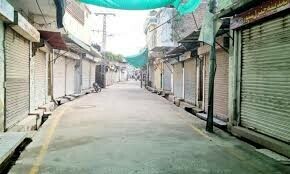 |
WATERLOO: The little Belgian town of Waterloo is feverishly preparing to celebrate the 200th anniversary of one of history’s greatest battles, hoping it can reclaim its name from a London railway station and an ABBA song.
Two centuries after it became famous as the place where “Napoleon did surrender”, the former farming village has become a sleepy suburb 25 kilometres (17 miles) south of the capital Brussels, with a population of 30,000.
But now its shop windows are full of pictures of the French emperor’s famous two-horned hats and little Napoleons perched on white stallions, ahead of several days of huge celebrations later this month.
After years of relative obscurity there is a feeling that Waterloo is finally facing its fate as a historic tourism draw.
“I’ve lived in Waterloo for 50 years and I’ve always known the story of Napoleon,” retiree Antoine Delsemme told AFP in the small town centre. “But all this will attract people, it will make the town better known and that will profit the inhabitants, especially shop-owners. That’s very good.”
While the battle is commonly known as Waterloo, the town itself was only the headquarters of the Duke of Wellington, who led the allied British and Prussian forces.
Most of the actual fighting in fact took place in neighbouring villages.
And it is there, several miles south of Waterloo on the plain of Mont-Saint-Jean, that the busiest preparations are underway for the commemorative events which are expected to draw around 200,000 people, a quarter of them foreigners.
Five thousand to re-enact battle
A huge light-and-sound show called “Inferno” on June 18, and two days of battle re-enactments that follow on June 19 and 20 will take place in a huge bowl-shaped field full of tall grass.
For weeks workers have been setting up stands that will seat around 50,000 spectators per day — more than the capacity of Belgium’s national football stadium — with still more standing.
From the peak from where Wellington led the British troops, it is only a few hundred metres to the Hougoumont and de la Haie-Sainte farms where the allied troops made their most heroic and bloody stands against French forces.
Also nearby is the Belle Alliance inn that Napoleon used as his headquarters.
The two colossal re-enactments — which will evoke the heat of a history-changing battle lasting a dozen hours, during which 45,000 people were killed or wounded — will involve 5,500 enthusiasts in period uniforms from 52 countries.
Alongside them will be 100 cannon and 360 horses to lend authenticity.
“This will be the biggest re-enactment of the Napoleonic era ever, anywhere in the world,” said Etienne Claude, the director of the re-enactment association, which has spent 18 months working on the project.
“We had to install the bivouacs, the showers, provide more than 30 tonnes of straw, hay, horse boxes and put up the sets,” added Claude.
Modern museum, old battlefield
The Waterloo battlefield has been somewhat overlooked for decades, becoming arguably more famous as the name of both a 1974 Eurovision-winning song by Swedish pop group ABBA and of a major railway station in south London.
But with the anniversary coming up amid a surge in “battlefield tourism” across Europe, Waterloo is hoping to cash in.
The hope is also that it could revive tourism generally in Belgium’s poorer French-speaking region of Wallonia, which gets fewer visitors than the richer Flemish part of Belgium — home to the historic city of Bruges.
“The bicentenary is a point of pride. But afterwards the battlefield must also become a point of entry for tourism in Wallonia,” said Waterloo mayor Florence Reuter.
She said authorities aimed to make Waterloo part of a broader historic experience and not just a “day trip to Lion’s Mount”, the 45-metre (150 foot) grass hill topped by a statue of a lion constructed at the site in 1826.
Several newer buildings in the area have been knocked down to restore the battlefield to its original appearance.
Meanwhile a new underground exhibit called “Memorial 1815” has just opened, featuring animated tableaux and 3D films that aim to give tourists a sense of being plunged into battle.
Eventually Waterloo hopes to attract 500,000 visitors a year, representing more than twice as many tourists swarming across the historic fields as there were soldiers who fought in the original battle.
Published in Dawn, June 3rd, 2015
On a mobile phone? Get the Dawn Mobile App: Apple Store | Google Play















































Dear visitor, the comments section is undergoing an overhaul and will return soon.